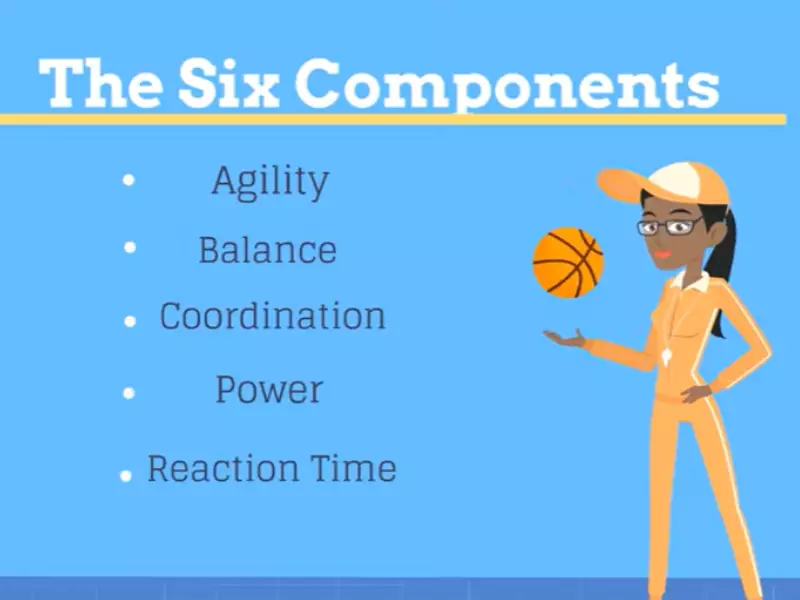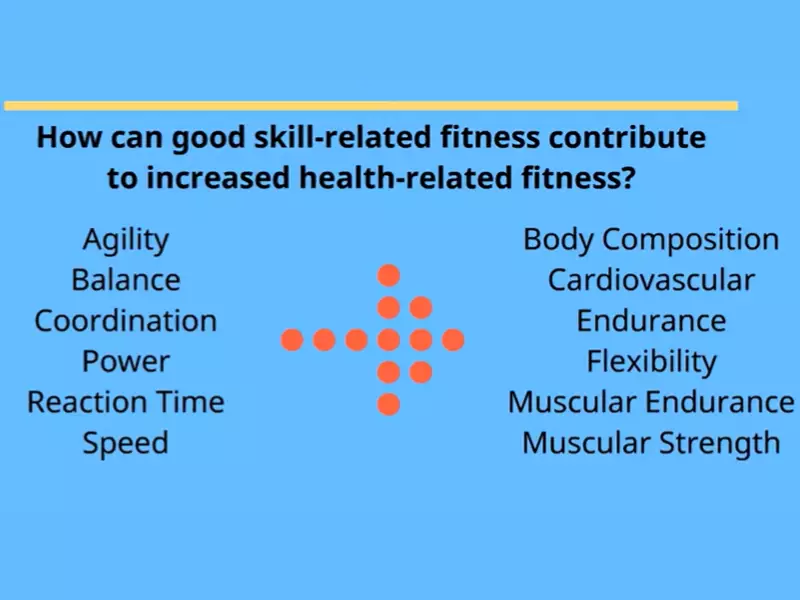Physical fitness encompasses a wide array of components, each contributing uniquely to overall health and well-being. At its core, it involves two primary categories: skill and skill-related physical fitness. Both play significant roles in an individual’s athletic capabilities, but they operate differently in terms of development, application, and impact on performance.
The difference between skill and skill-related physical fitness lies primarily in their application and objectives. Skill in physical fitness refers to the ability to perform specific sport or activity movements with precision and efficiency. In contrast, skill-related physical fitness encompasses attributes such as agility, balance, coordination, speed, power, and reaction time—qualities that enhance one’s capability to learn and execute physical skills effectively.
Understanding these distinctions is crucial for athletes, coaches, and fitness enthusiasts aiming to optimize their performance or achieve specific fitness goals. By acknowledging the unique contributions of each, individuals can tailor their training and development strategies to address both skill proficiency and the physical capacities that support skill execution.

Defining Physical Fitness
Physical fitness is more than just the ability to run long distances or lift heavy weights. It’s a multi-faceted concept that encompasses a variety of components that contribute to the overall health and ability of an individual to perform different types of physical activities.
Components of Physical Fitness
The components of physical fitness can be broadly categorized into two main types: health-related and skill-related fitness.
- Health-related fitness includes cardiovascular endurance, muscle strength, muscle endurance, flexibility, and body composition. These components are essential for everyday functioning and are associated with a lower risk of chronic diseases, such as heart disease, diabetes, and obesity.
- Skill-related fitness, on the other hand, includes agility, balance, coordination, speed, power, and reaction time. These are not only crucial for athletes but also beneficial in everyday life activities.
Role in Overall Health
Physical fitness plays a pivotal role in maintaining and enhancing overall health. Regular physical activity can help:
- Improve cardiovascular health
- Strengthen bones and muscles
- Enhance mental health and mood
- Increase lifespan
Being physically fit means being able to carry out daily tasks with vigor and without undue fatigue.
Skill in Physical Fitness
When we talk about skill in physical fitness, we refer to the ability to perform tasks effectively and efficiently. This could be anything from hitting a ball with precision in tennis to executing a flawless dive in swimming.
Definition and Examples
Skill in physical fitness is defined by how well an individual can use their body to perform a specific task. Examples of skill in physical fitness include:
- A gymnast executing a complex routine
- A basketball player dribbling past opponents
- A swimmer optimizing stroke efficiency
Impact on Performance
Skill has a direct impact on performance. The better an individual’s skill, the more effectively they can perform in their sport or activity. Skills are developed through practice and are refined over time, leading to improvements in overall performance.
Skill-Related Fitness Components
Skill-related components of fitness are crucial for success in sports and activities that require quick reflexes, precise movements, and effective coordination. Let’s explore these components:
Agility
Agility is the ability to move quickly and change direction with ease. It’s important in sports that require quick transitions, like soccer, basketball, and tennis.
Balance
Balance is the ability to maintain body equilibrium while stationary or moving. Sports like gymnastics and skateboarding require a high level of balance.
Coordination
Coordination is the ability to use different parts of the body together smoothly and efficiently. From dribbling a basketball to playing the piano, coordination is key.
Speed
Speed is the ability to move your body or parts of your body swiftly. Many sports, such as track and field, value speed highly.
Power
Power is the ability to exert maximum force in minimum time. It’s crucial in sports that require explosive movements, like weightlifting and sprinting.
Reaction Time
Reaction time is how quickly an individual can respond to a stimulus. This is critical in almost all sports, especially in those requiring quick decisions, such as motor racing.
Skill vs. Skill-Related Fitness
Understanding the difference between skill and skill-related fitness components is crucial for developing a comprehensive training program.
Key Differences
The key difference between skill and skill-related fitness lies in their application. Skill is specific to particular movements or actions within a sport or activity, while skill-related fitness is about the physical attributes that support the development and execution of those skills.
How Each Contributes to Athletic Performance
Both skill and skill-related fitness contribute significantly to athletic performance:
- Skill development allows an athlete to perform specific tasks more efficiently.
- Skill-related fitness improves an athlete’s ability to train for and execute those skills effectively.

Importance in Sports
Role of Skill in Specific Sports
Skill is the cornerstone of excellence in any sport. It differentiates the novices from the experts. In basketball, skill determines how accurately a player can shoot or pass. In soccer, it’s about dribbling, shooting, and tactical awareness. Each sport has its unique set of skills critical for success.
Role of Skill-Related Fitness in Athletic Success
Skill-related fitness attributes like agility, balance, and speed significantly enhance an athlete’s performance. For instance, agility is crucial in football for evading tackles, while balance is essential in gymnastics to execute complex routines. These components complement specific skills, enabling athletes to perform at their peak.
Developing Skills and Skill-Related Fitness
Training Methods for Skill Improvement
Improving skills requires focused training that often includes:
- Repetitive practice to refine the movements
- Feedback from coaches to correct techniques
- Drills designed to improve specific aspects of a skill
- Game simulations that allow athletes to apply skills in a dynamic environment
Exercises for Enhancing Skill-Related Fitness
Enhancing skill-related fitness involves exercises tailored to improve agility, balance, coordination, speed, power, and reaction time. For instance:
- Agility ladders improve foot speed and agility.
- Balance boards or yoga enhance balance and core strength.
- Plyometrics boost power and speed.
Measuring Progress
Assessing Skill Proficiency
Assessing skill proficiency involves observing the athlete’s ability to execute specific skills under various conditions. Coaches may use video analysis to give detailed feedback or skill-specific drills to test proficiency levels.
Evaluating Skill-Related Physical Fitness
Evaluating skill-related fitness can be done through specific tests:
- Agility tests like the shuttle run
- Balance tests such as the stork stand test
- Speed tests like the 40-yard dash
These tests provide objective data to track progress and tailor training programs.
Balancing Skills and Fitness
Strategies for Integrating Skills and Fitness Training
Balancing skills and skill-related fitness requires a holistic approach:
- Incorporate skill-related exercises into regular training routines.
- Use cross-training to develop fitness components beneficial to the sport.
- Schedule to ensure there’s adequate time for both skill development and fitness enhancement without causing overtraining.
Tailoring Programs to Individual Needs
Every athlete is unique, requiring personalized training programs. Tailoring involves:
- Assessing individual strengths and weaknesses to focus on areas needing improvement.
- Adjusting training intensity and volume based on the athlete’s condition and progress.
- Incorporating rest and recovery as integral parts of the training regime.
Personalized training programs ensure athletes develop the skills and fitness components essential for their specific sports, leading to improved performance and reduced risk of injury.
FAQs
What is physical fitness?
Physical fitness is a state of health and well-being that enables individuals to perform daily activities with vigor, participate in sports, and engage in recreational activities without undue fatigue. It encompasses various components, including cardiovascular endurance, muscle strength, flexibility, and body composition, along with skill and skill-related attributes that support physical activity.
How does skill differ from skill-related fitness?
Skill in physical fitness refers to the ability to perform specific movements or activities with precision, often within a sport or physical task. Skill-related physical fitness, however, includes attributes like agility, balance, coordination, speed, power, and reaction time, which underpin the capacity to learn, improve, and execute those skills efficiently.
Why is skill-related fitness important?
Skill-related fitness is crucial because it lays the foundation upon which specific skills are built and refined. Attributes such as agility, balance, and coordination enhance an individual’s ability to perform sports-specific movements more effectively, leading to improved performance. Furthermore, developing skill-related fitness can reduce the risk of injuries and contribute to overall physical wellness.
Can you improve skill-related physical fitness?
Yes, skill-related physical fitness can be improved through targeted training that focuses on developing the specific attributes such as agility, balance, coordination, speed, power, and reaction time. Regular practice and exercises designed to challenge these areas can lead to significant improvements, enhancing both specific skill performance and overall physical fitness.
Conclusion
The exploration of skill versus skill-related physical fitness reveals a nuanced landscape where both elements play pivotal roles in shaping athletic performance and physical health. Recognizing the distinction between these two categories allows for more targeted training approaches, enabling individuals to maximize their potential in sports and physical activities.
As we continue to advance our understanding of physical fitness, the importance of a holistic approach that encompasses both skill and skill-related components cannot be overstated. Tailoring training to address both areas not only optimizes performance but also contributes to a well-rounded and sustainable fitness regime, ensuring individuals can enjoy a lifetime of health, wellness, and physical activity.
